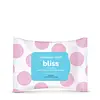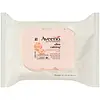What's inside
What's inside
 Key Ingredients
Key Ingredients

 Benefits
Benefits

 Concerns
Concerns

 Ingredients Side-by-side
Ingredients Side-by-side

Water
Skin ConditioningCyclopentasiloxane
EmollientCetearyl Isononanoate
EmollientPolysorbate 20
EmulsifyingTocopheryl Acetate
AntioxidantChamomilla Recutita Flower Extract
MaskingCucumis Sativus Fruit Extract
EmollientAvena Sativa Kernel Extract
AbrasiveAloe Barbadensis Leaf Extract
EmollientAlthaea Officinalis Root Extract
Skin ConditioningGlycerin
HumectantGlyceryl Stearate
EmollientLauryl Glucoside
CleansingCetearyl Alcohol
EmollientCetyl Palmitate
EmollientCeteareth-12
EmulsifyingCeteareth-20
CleansingSodium Lauryl Glucose Carboxylate
CleansingCaprylyl Glycol
EmollientPhenoxyethanol
PreservativeSorbic Acid
PreservativePotassium Sorbate
PreservativeBenzoic Acid
MaskingSodium Citrate
BufferingSodium Benzoate
MaskingParfum
MaskingWater, Cyclopentasiloxane, Cetearyl Isononanoate, Polysorbate 20, Tocopheryl Acetate, Chamomilla Recutita Flower Extract, Cucumis Sativus Fruit Extract, Avena Sativa Kernel Extract, Aloe Barbadensis Leaf Extract, Althaea Officinalis Root Extract, Glycerin, Glyceryl Stearate, Lauryl Glucoside, Cetearyl Alcohol, Cetyl Palmitate, Ceteareth-12, Ceteareth-20, Sodium Lauryl Glucose Carboxylate, Caprylyl Glycol, Phenoxyethanol, Sorbic Acid, Potassium Sorbate, Benzoic Acid, Sodium Citrate, Sodium Benzoate, Parfum
Water
Skin ConditioningIsononyl Isononanoate
EmollientPentaerythrityl Tetraethylhexanoate
EmollientCetyl Ethylhexanoate
EmollientIsostearyl Palmitate
EmollientCyclopentasiloxane
EmollientHexylene Glycol
EmulsifyingPEG-6 Caprylic/Capric Glycerides
EmulsifyingPhenoxyethanol
PreservativeSucrose Cocoate
EmulsifyingParfum
MaskingCarbomer
Emulsion StabilisingPEG-4 Laurate
EmulsifyingSodium Hydroxide
BufferingBenzoic Acid
MaskingDehydroacetic Acid
PreservativeChrysanthemum Parthenium Flower/Leaf/Stem Juice
AntioxidantIodopropynyl Butylcarbamate
PreservativeGlycerin
HumectantCucumis Sativus Fruit Extract
EmollientAloe Barbadensis Leaf Extract
EmollientWater, Isononyl Isononanoate, Pentaerythrityl Tetraethylhexanoate, Cetyl Ethylhexanoate, Isostearyl Palmitate, Cyclopentasiloxane, Hexylene Glycol, PEG-6 Caprylic/Capric Glycerides, Phenoxyethanol, Sucrose Cocoate, Parfum, Carbomer, PEG-4 Laurate, Sodium Hydroxide, Benzoic Acid, Dehydroacetic Acid, Chrysanthemum Parthenium Flower/Leaf/Stem Juice, Iodopropynyl Butylcarbamate, Glycerin, Cucumis Sativus Fruit Extract, Aloe Barbadensis Leaf Extract
Ingredients Explained
These ingredients are found in both products.
Ingredients higher up in an ingredient list are typically present in a larger amount.
Aloe Barbadensis Leaf Extract is an extract of the leaves of the aloe, Aloe barbadensis, Liliaceae.
Aloe is one of the most well-known natural soothing ingredients, and for good reason. It’s full of water and has a cooling, calming effect on the skin, especially when it’s sunburned, itchy, or irritated. Aloe also helps your skin stay hydrated and smooth by mimicking what healthy skin naturally produces. On top of that, it contains vitamins and nutrients that support skin recovery.
It doesn’t protect you from the sun, but it can help your skin bounce back after too much time in it.
Let’s get into the details:
Aloe contains antioxidant Vitamins A, C, and E, which help fight off free radicals (unstable molecules from things like pollution that can damage your skin).
It’s also rich in polysaccharides, which are natural sugars that help hydrate the skin by acting like the skin’s own moisturizing agents. These, along with other sugars like monosaccharides, help form a protective barrier that locks in moisture.
Aloe works as both a humectant and an emollient. That means it draws water into the skin (humectant) and helps trap it there (emollient), making it an effective natural moisturizer.
You’ll also find a mix of other skin-supporting ingredients in aloe, including folic acid, choline, calcium, amino acids, fatty acids, and even Vitamin B12.
Out of the 420+ species of aloe, Aloe barbadensis is the most widely used in skincare products thanks to its gentle yet effective properties.
There are over 420 species of aloe but Aloe Barbadensis is the most commonly used for topical products.
Learn more about Aloe Barbadensis Leaf ExtractBenzoic Acid is used to preserve and adjust the pH of products.
The antimicrobial property of Benzoic Acid helps elongate a product's shelf life. Its main role is to reduce fungi growth and is not found to be effective at fighting bacteria. Therefore Benzoic Acid is always added along with other preservatives.
In its pure form, Benzoic Acid looks like a white crystalline solid. It has slight solubility in water.
The name of Benzoic Acid comes from gum benzoin, which used to be the sole source of deriving this ingredient. Benzoic Acid is the most simple aromatic carboxylic acid.
Benzoic Acid is naturally occuring in strawberries, mustard, cinnamon, and cloves. It has a slight scent but is not considered to be a fragrance.
Learn more about Benzoic AcidThis extract comes from cucumber. Cucumbers are mostly made up of water (95%), and the other 5% is composed of: vitamin C, caffeic acid, fatty acids, amino acids, and other minerals.
Cucumbers have anti-inflammatory, barrier repair, and hydrating properties.
They contain shikimate dehydrigenase, an enzyme shown to help reduce inflammation and soothe the skin.
The amino acids found in cucumbers help nourish our skin's natural acid mantle (it's an important part of our skin barrier). This slightly acidic film acts as a barrier to protect us from bacteria, viruses, and other contaminants.
Unless you have an allergy to cucumbers, this is generally a non-irritating ingredient.
Fun fact: Cucumis Sativus is native to South Asia and can now be found on every continent.
Learn more about Cucumis Sativus Fruit ExtractCyclopentasiloxane, or D5, is a silicone used to improve texture of products and trap moisture.
D5 is considered lightweight and volatile. Volatile means it evaporates quickly after application. Once evaporated, D5 leaves a thin barrier that helps keep skin hydrated.
It is also an emollient. Emollients help soften the skin and prevent water loss. Silicones create a silky texture in products. D5 helps other ingredients become more spreadable.
Studies show D5 is safe to use in skincare products. We recommend speaking with a skincare professional if you have concerns.
Learn more about CyclopentasiloxaneGlycerin is already naturally found in your skin. It helps moisturize and protect your skin.
A study from 2016 found glycerin to be more effective as a humectant than AHAs and hyaluronic acid.
As a humectant, it helps the skin stay hydrated by pulling moisture to your skin. The low molecular weight of glycerin allows it to pull moisture into the deeper layers of your skin.
Hydrated skin improves your skin barrier; Your skin barrier helps protect against irritants and bacteria.
Glycerin has also been found to have antimicrobial and antiviral properties. Due to these properties, glycerin is often used in wound and burn treatments.
In cosmetics, glycerin is usually derived from plants such as soybean or palm. However, it can also be sourced from animals, such as tallow or animal fat.
This ingredient is organic, colorless, odorless, and non-toxic.
Glycerin is the name for this ingredient in American English. British English uses Glycerol/Glycerine.
Learn more about GlycerinParfum is a catch-all term for an ingredient or more that is used to give a scent to products.
Also called "fragrance", this ingredient can be a blend of hundreds of chemicals or plant oils. This means every product with "fragrance" or "parfum" in the ingredients list is a different mixture.
For instance, Habanolide is a proprietary trade name for a specific aroma chemical. When used as a fragrance ingredient in cosmetics, most aroma chemicals fall under the broad labeling category of “FRAGRANCE” or “PARFUM” according to EU and US regulations.
The term 'parfum' or 'fragrance' is not regulated in many countries. In many cases, it is up to the brand to define this term.
For instance, many brands choose to label themselves as "fragrance-free" because they are not using synthetic fragrances. However, their products may still contain ingredients such as essential oils that are considered a fragrance by INCI standards.
One example is Calendula flower extract. Calendula is an essential oil that still imparts a scent or 'fragrance'.
Depending on the blend, the ingredients in the mixture can cause allergies and sensitivities on the skin. Some ingredients that are known EU allergens include linalool and citronellol.
Parfum can also be used to mask or cover an unpleasant scent.
The bottom line is: not all fragrances/parfum/ingredients are created equally. If you are worried about fragrances, we recommend taking a closer look at an ingredient. And of course, we always recommend speaking with a professional.
Learn more about ParfumPhenoxyethanol is a preservative that has germicide, antimicrobial, and aromatic properties. Studies show that phenoxyethanol can prevent microbial growth. By itself, it has a scent that is similar to that of a rose.
It's often used in formulations along with Caprylyl Glycol to preserve the shelf life of products.
Water. It's the most common cosmetic ingredient of all. You'll usually see it at the top of ingredient lists, meaning that it makes up the largest part of the product.
So why is it so popular? Water most often acts as a solvent - this means that it helps dissolve other ingredients into the formulation.
You'll also recognize water as that liquid we all need to stay alive. If you see this, drink a glass of water. Stay hydrated!
Learn more about Water